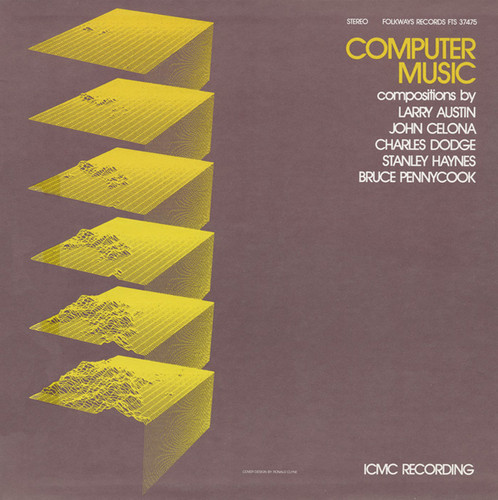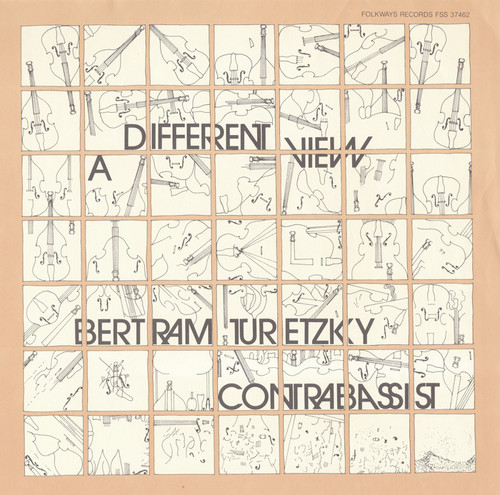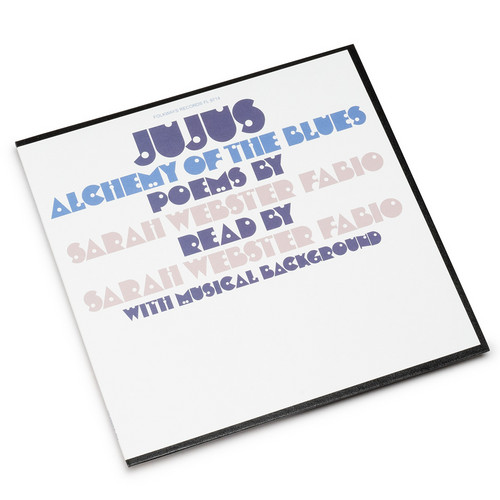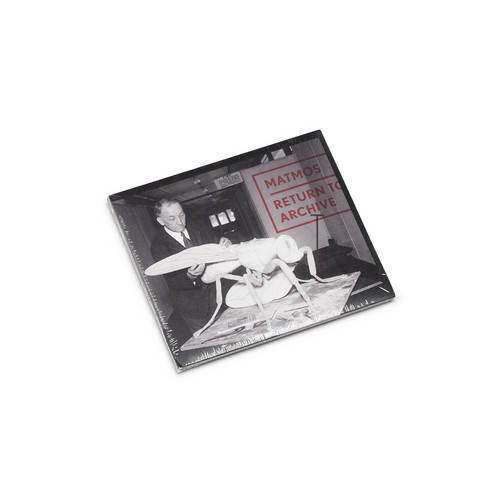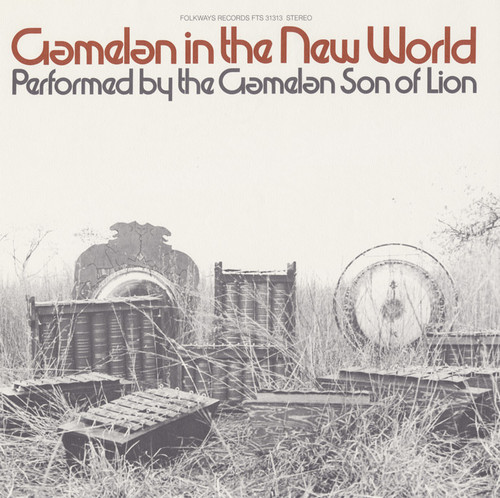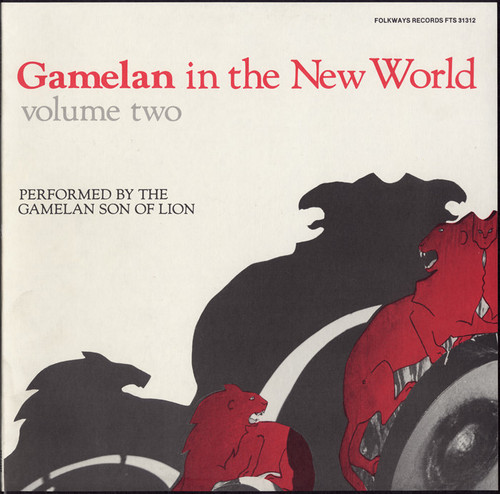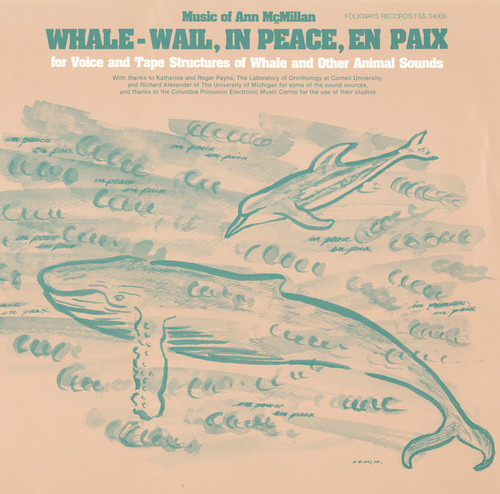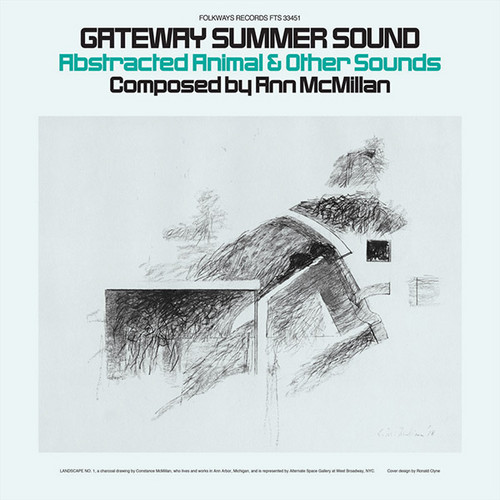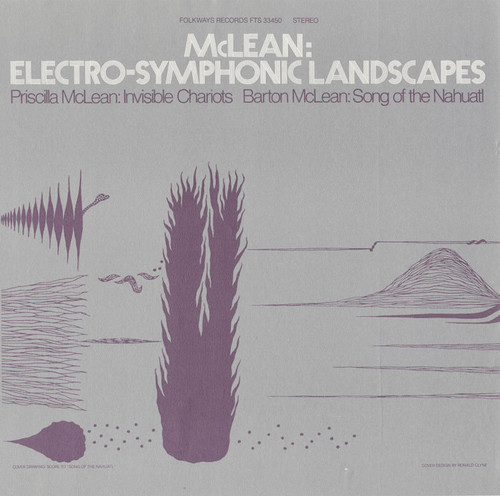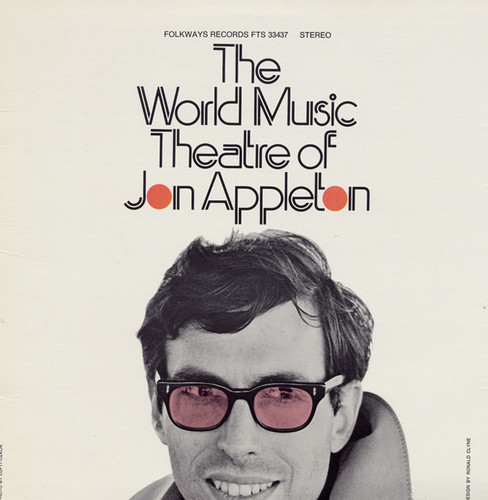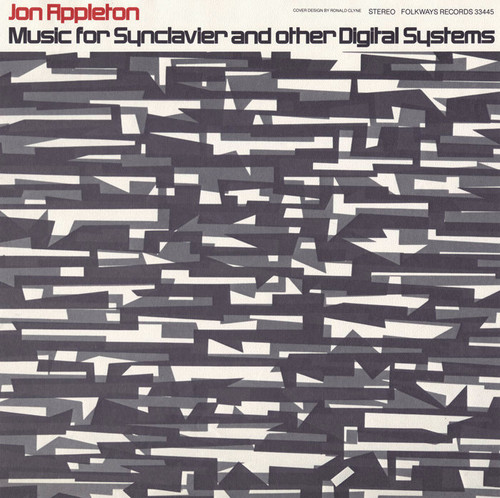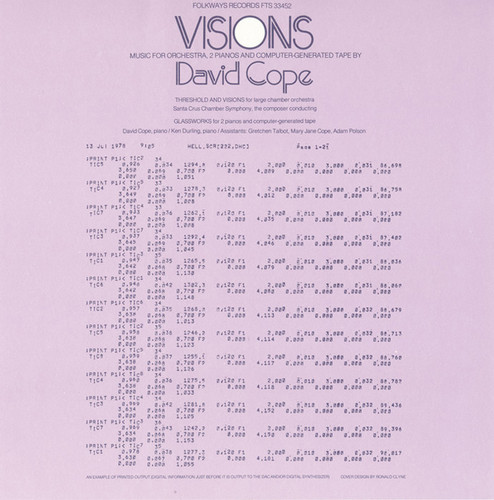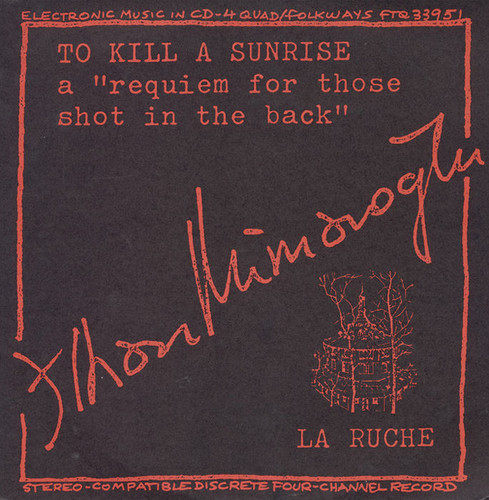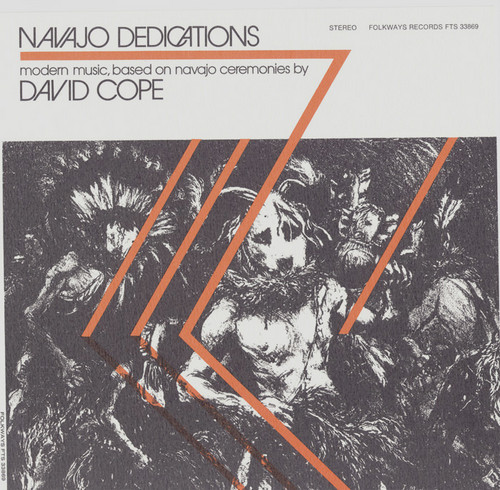★Folkways Records
Computer Music From The Outside In
*2024 stock* A 1983 Folkways release, Computer Music from the Outside In showcases three composers narrating the ideas and processes behind their computer music compositions, as well as the compositions themselves. The first two pieces are by Barton McLean: “Etunytude” is an etude-like piece made of gradually changing harmonic sounds, and “The Last Ten Minutes” is meant to be an abstract representation of the devastation of “the last nuclear holocaust.” “The Whistling Wind,” by Karl Korte, is ba…
Computer Music
*2024 stock* Computer Music serves as the official musical documentation of the November 1981 International Computer Music Conference, held at North Texas State University in Denton, Texas. The album features five compositions with music that ranges from electronic sounds to female vocals, flute and horns, stringed instruments, and percussion. The composers include Larry Austin, whose early works were recorded with the help of Leonard Bernstein; Bruce Pennycook, who now teaches music at the Butl…
A Different View
*2024 stock* Contrabass (double bass) solo virtuoso Bertram Turetzky performs seven solos on the contrabass in this 1981 release. Using bow, plucking strings, tapping on the instrument’s wood body, and employing a little audio technology, Turetzky demonstrates the full range of musical sounds that can be produced on the contrabass. His repertoire on this recording includes a piece dedicated to him (“The Last Contrabass in Las Vegas”), two of his own compositions, and the Lennon-McCartney ballad …
Together To The Tune Of Coltrane's "Equinox"
Big Tip! Known for her contributions to the Black Arts Movement of the 1970s, Sarah Webster Fabio published a plethora of poetry collections and works of cultural criticism. Together to the Tune of John Coltrane’s “Equinox” is her fourth and final record for Folkways, and sees her vivid language and distinctive voice becoming enmeshed with a dynamic backdrop of exploratory jazz. Fabio pays homage to Black jazz and blues musicians Duke Ellington, Bessie Smith, Billie Holiday, and John Coltrane. F…
Jujus / Alchemy of the Blues
Big Tip! Jujus/Alchemy of the Blues is Sarah Webster Fabio’s third album for Folkways. Funky riffs and jazz arrangements written and performed by her children and their band Don’t Fight the Feeling underpin Fabio’s poetry, giving her words gravity. "I feel that these [poems] represent the epitome of my experimenting with the integration of music and poetry in a Black idiom taken from the rich source of inspiration welling from the Black experience here in America,” explains Fabio in the album’s …
Return to Archive
In 1948, Moses Asch founded Folkways Records with a self-proclaimed mandate to record the sounds of the entire world. From the Sounds of North American Frogs to Speech After the Removal of the Larynx, Folkways documented the audible nooks and crannies of existence on hundreds of LPs produced by field recordists, scientists, and experimentalists probing the margins of the human soundscape. Seventy-five years later, electronic music duo Matmos have diced, looped, stretched, and recontextualized th…
The Mermaid's Purse: Live at Chatham College, 1976
In 1976 the Entourage Music and Theater Ensemble reached a creative zenith. The nomadic troupe had just released The Neptune Collection, its iconic second album for Moses Asch’s Folkways Records, and decided to present the music to audiences across the rust belt in its most miasmic, elemental form. Extended stretches of full-group improvisation mingled with folk-tune like melodies during these performances, which featured multiple dancers spontaneously interpreting the music, at times in elabora…
Gamelan in the New World, Vol. 1
**2020 stock** This album is a compilation of avant-garde art music performed by Son of Lion, an American Gamelan Orchestra that uses traditional Indonesian instruments as well as found objects (hubcaps, foodcans) in its music. The liner notes feature diagrams and/or descriptions of each piece that explain the nature of its unique composition. For example, Elena Carey describes the four nitrogen bases of D.N.A. and an analysis of the relationship between this raw genetic material her Gamelan mus…
Gamelan in the New World, Vol. 2
**2020 stock** Gamelan in the New World: Vol. 2, released in 1982, is a teaching album, providing the listener with lyrics, scales, and a history of Indonesian music culture. Gamelan Son of Lion play keyed instruments that are constructed in the Javanese style. The group uses both the pelog and slendro tuning systems, sometimes in conjunction with one another within a single composition. The group is composed of ethnomusicologists and instrumentalists who are dedicated to playing and preserving …
Whale - Wail, In Peace, En Paix: For Voice and Tape Structures of Whale and Other Animal Sounds
**2020 stock** Whale - Wail, In Peace, En Paix: For Voice and Tape Structures of Whale and Other Animal Sounds is a 1986 recording by composer Ann McMillan, commissioned by Moses Asch. The piece, first presented on Baffin Island, north of the Arctic Circle, for an Inuit audience, is a plea to humans to be more like whales. Inspired by her study with Edgard Varèse and his work with pre-recorded sounds, the composition features whales and other sound sources (including bull, insect, and Chinese cy…
Gateway Summer Sound: Abstracted Animal and Other Sounds
**2020 stock** Ann McMillan did not record prolifically, but she was at the vanguard of electronic composition in New York in the 1970s. A student of groundbreaking composer Edgard Varèse, McMillan’s primary medium was magnetic tape, which she manipulated to create surreal soundscapes. On Gateway Summer Sounds, her debut album released on Folkways in 1979 and recorded at the legendary Princeton-Columbia Electronic Music Center, she sources sounds from the natural world – frogs, insects, field re…
Mushroom Ceremony of the Mazatec Indians of Mexico
**2020 stock** Recorded on the night of July 21/22, 1956 by V.P. & R. Gordon Wasson, these are rough and ready field recordings featuring the voice of Maria Sabina (1894-1985) a Mexican curandera who would perform healing vigils known as veladas in Huautla de Jimenez, Oaxaca where all participants would ingest psilocybin mushrooms (Maria's holy children), as a sacrament to open the gates of the mind and communicate with the sacred. María Sabina (July 22, 1894, Huautla de Jiménez, Oaxaca, Mexico …
Eight electronic pieces
**2020 stock** Chance combinations, accidental themes, chaos in general—these are the musical modes that Tod Dockstader uses in composing electronic pieces. Blending oscillating electronic sounds with natural sounds is like being "confronted with a potential orchestra of thousands of instruments," he says, and the task becomes one of "improvising."
This CD is a custom made copy from Smithsonian Folkways collection. Every effort has been made to preserve its historical and aural integrity. The or…
Electro-Symphonic Landscapes
**2020 stock** This 1979 album, by the husband and wife composing-performing electronic music duo of Priscilla and Barton McLean, showcases two pieces, “Invisible Chariots” by Priscilla and “Song of the Nahuatl” by Barton. Begun in 1975 and completed in 1977, “Invisible Chariots” is a three-movement piece, named after a Carl Sandburg poem, about the “intuitive creative force” that shapes composition. Composed in 1976, “Song of the Nahuatl” was underwritten by a grant from the National Endowment …
The World Music Theatre of Jon Appleton
**2020 stock** This 1974 recording by electro-acoustic music composer Jon Appleton is designed to take the listener to different musical landscapes. Appleton notes differences in context that will make the music more and less effective (“not everything I intended will be heard by the listener because no two listeners share the same aural experiences…because we are continually expanding our aural vocabulary, the sounds used assume a different significance as time passes”). Liner notes contain a b…
Music for Synclavier and Other Digital Systems
**2020 stock** Electro-acoustic musician/composer Jon Appleton plays a variety of digital instruments which, in his words, “obtain timbres and textures which convey expressive character through my work.” Instruments used in this recording are the Dartmouth Digital Synthesizer, the Synclavier, and the MUSSE of Sweden’s Stiftelsen Elektronmusikstudion Stockholm. The five pieces span the years 1974 to 1977 and include Appleton’s first digital piece “Zoetrope.” Liner notes include short introduction…
Visions - Music for Orchestra, 2 Pianos and Computer-Generated Tape
**2020 stock** This 1979 record is a five-movement composition for large chamber orchestra by David Cope. First presented by the Santa Cruz Chamber Symphony in 1978, the work attempts to demonstrate the relationships between sound and physical space and to translate them to recorded sound as well as performance. The tapes in the piece were composed at Stanford’s Artificial Intelligence Laboratory and were “spliced” digitally rather than physically. Liner notes contain drawings of the way that Co…
Israeli Electroacoustic Music
**2020 stock** Israeli Electroacoustic Music collects the works of six musicians from varied backgrounds, all recognized for their musical activity in electronic music and in Israel at the time of the album’s recording in 1981. These composers exemplify atonal 20th century music and musique concrete in a mixture of acoustic and electronic instrumentation, ranging from album producer Robin Julian Heifetz’s dark and frantic A Clear and Present Danger (which “attempts to symbolize the fear of a mot…
To Kill a Sunrise and La Ruche
**2020 stock** Turkish-born musician and composer Ilhan Mimaroglu worked extensively with electronic (tape) music. The two programmatic pieces paired here are "To Kill a Sunrise," a dirge subtitled "Requiem for Those Shot in the Back" with words borrowed from a poem by Guatemalan guerilla poet Marco Antonio Flores, composed in Columbia-Princeton Electronic Music Center (New-York, N.Y., 1974). And "La Ruche" composed at Groupe de Recherches Musicales (Paris, France, 1968) an experiment of reminis…
Navajo Dedications
**2020 stock** This 1976 Folkways release by David Cope presents modern music based on Cope’s intensive research into—and respect for—Navajo ceremonies, and Navajo music in particular. Ranging from pieces for large chamber ensemble to a work scored for a single performer, the four compositions are unique interpretations of Native American Indian myths and culture. The liner notes include detailed explanations of the inspiration, organization, and arrangement of each of these complex works.
This …

